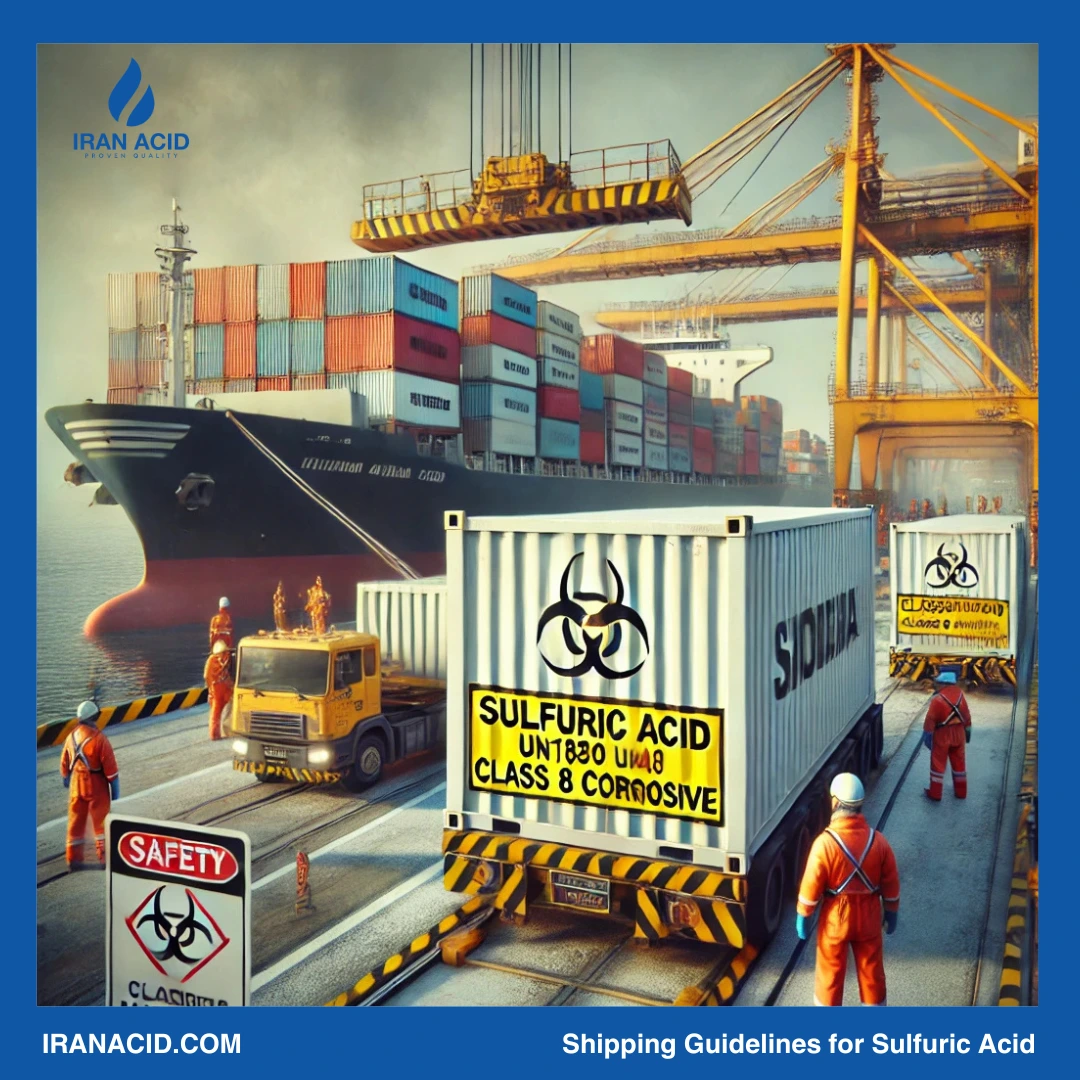Sulfuric acid (H₂SO₄) is one of the most widely transported chemicals globally due to its critical role in various industries, such as agriculture, manufacturing, and chemical production. Exporting sulfuric acid requires careful adherence to international regulations, ensuring both safety and compliance.
Below, we outline key shipping guidelines essential for safely and successfully exporting sulfuric acid.
1. Proper Packaging and Container Standards
The safe transport of sulfuric acid depends heavily on the quality and suitability of its packaging. According to international standards, sulfuric acid must be shipped in containers specifically designed to withstand its corrosive nature, such as:
- UN-certified HDPE drums
- IBC tanks (Intermediate Bulk Containers)
- Specially-lined tanker trucks or ISO tanks
Why Compliance Matters:
- Prevents leaks and spills
- Maintains product purity and quality
- Protects environment and human health during transport
2. Labeling and Documentation
Clear labeling and documentation are essential for compliance during sulfuric acid shipment. Proper labels and documentation are required to inform carriers, handlers, and recipients of potential hazards and safe handling practices.
Required labeling includes:
- Hazard class identification (Class 8: Corrosive substances)
- UN number (UN1830)
- Proper shipping name (“Sulfuric Acid”)
- Emergency response information clearly displayed
3. Safety Measures for Transportation
Sulfuric acid shipping must comply with specific safety and emergency response protocols:
- Ensure transport vehicles are properly ventilated.
- Use spill containment equipment onboard transport vehicles.
- Maintain access to emergency response equipment and first-aid kits.

4. International Compliance and Documentation
Exporters must comply with global safety regulations and standards, including:
- IMDG Code (International Maritime Dangerous Goods) for sea transportation.
- IATA Dangerous Goods Regulations for air freight.
- ADR Agreement for road transportation within Europe.
Adherence to these regulations not only ensures safe transportation but also facilitates smoother customs clearance.
5. Training for Personnel
Personnel involved in the transportation process must undergo rigorous training regarding the risks and handling of sulfuric acid. Proper training ensures that all personnel involved can:
- Safely handle the acid.
- Respond effectively to spills or accidents.
- Conduct loading and unloading processes correctly.
6. Documentation Requirements for Export
Exporters must prepare specific documentation for compliance and customs clearance when shipping sulfuric acid internationally. Typical documents include:
- Material Safety Data Sheet (MSDS)
- Certificate of Analysis (CoA)
- Dangerous Goods Declaration
- Packing List and Commercial Invoice
These documents ensure transparency and regulatory compliance during international shipping processes.
7. Emergency Response and Spill Management
Effective emergency response planning is critical when handling hazardous materials like sulfuric acid. Exporters must ensure:
- Emergency response equipment and spill containment kits are readily available.
- Employees are adequately trained for spill response.
- Appropriate emergency contacts are clearly listed on all shipping documentation.
Conclusion: Your Trusted Export Partner for Sulfuric Acid
At Iran Acid, we are committed to strict safety standards and regulatory compliance when exporting sulfuric acid. Our expertise ensures that your shipments arrive safely, securely, and in full compliance with international guidelines.

Comments are closed